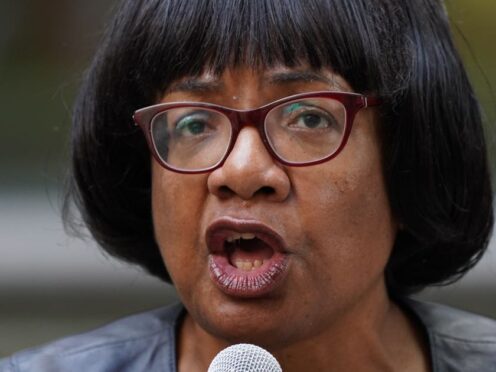Diane Abbott has accused Speaker Sir Lindsay Hoyle of failing to act in the “interests of the Commons or democracy” after she was not called to speak at Prime Minister’s Questions.
Major Tory donor Frank Hester is alleged to have said Ms Abbott, Britain’s longest-serving black MP, made him “want to hate all black women” and that she “should be shot”.
Independent MP Ms Abbott (Hackney North and Stoke Newington) stood repeatedly in a bid to catch Sir Lindsay’s eye and be called to ask a question, with Labour leader Sir Keir Starmer using the session to press Rishi Sunak about Mr Hester’s comments.
I don't know whose interests the Speaker thinks he is serving. But it is not the interests of the Commons or democracy.https://t.co/W4vuBb18gD
— Diane Abbott MP (@HackneyAbbott) March 13, 2024
A spokeswoman for the Speaker’s Office said there was “not enough time” to call all MPs.
Ms Abbott, writing on X, said: “I don’t know whose interests the Speaker thinks he is serving. But it is not the interests of the Commons or democracy.”
The spokeswoman for the Speaker’s Office said: “During Prime Minister’s Questions, the Speaker must select MPs from either side of the House on an alternating basis for fairness.
“This takes place within a limited timeframe, with the chair prioritising Members who are already listed on the Order Paper. This week – as is often the case – there was not enough time to call all Members who wanted to ask a question.”
PMQs is expected to run for 30 minutes.
It has been known for the occupant in the Speaker’s chair to allow PMQs to run for longer to ensure MPs are called to speak, with some sessions under John Bercow surpassing the 50-minute mark.
A ballot is run on a computer programme to decide the weekly list of 15 MPs who will be named on the order paper to ask questions to Prime Minister Rishi Sunak.
The Speaker is expected to call those MPs first, along with six questions from Labour leader Sir Keir and two from SNP Westminster leader Stephen Flynn.
On Wednesday, there were 11 opposition MPs and four Conservative MPs in the 15 listed on the order paper.
To ensure he alternated between picking MPs from both sides, Sir Lindsay called seven Tory MPs not listed.
Liberal Democrat leader Sir Ed Davey was also called to ask a question, with three Labour MPs on the original list of 15 missing out.
Wednesday business in the House of Commons usually runs until 7.30pm, with an adjournment debate running for the final 30 minutes.
The session on March 13 finished at 6.54pm.
Mr Hester has admitted making “rude” comments about Ms Abbott but claimed they had “nothing to do with her gender nor colour of skin”.
